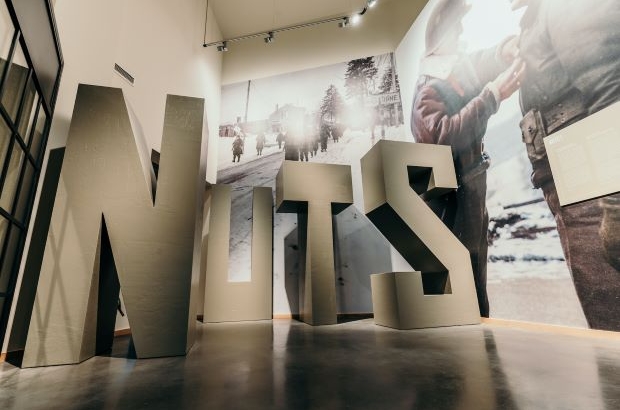- Daily & Weekly newsletters
- Buy & download The Bulletin
- Comment on our articles
Nuts! New museum in Bastogne commemorates famous symbol of WWII resistance
Ahead of the 80th anniversary of the bloodiest battle for US forces in World War Two, the Belgian town of Bastogne has opened a new museum honouring the iconic moment when the Allies refused to surrender to the German army.
Holed up in the Ardennes town and encircled by the enemy, the 101st Airborne Division of the US army had been suffering six day days of brutal onslaught when it received the surprise ultimatum to capitulate on 22 December 1944.
From his underground headquarters, Brigadier General Anthony McAuliffe’s spontaneous response – “Nuts!” – was officially communicated to the German commander. This infamous retort symbolised the spirit of resistance that epitomised the Allies’ response to Hitler’s final counteroffensive of the war.
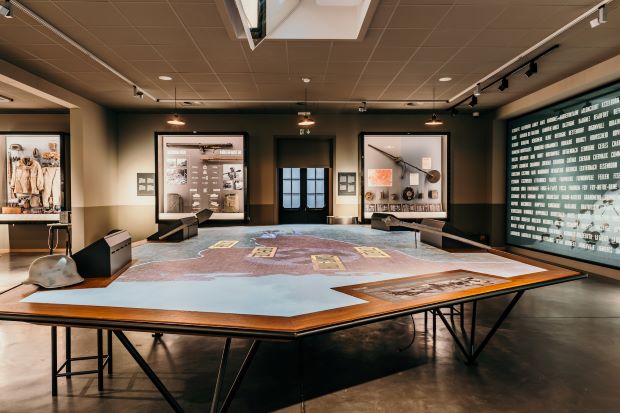
Now the cellars of the military barracks where this mythical episode took place have been transformed into a modern interpretation centre. Bastogne War Rooms takes visitors on an immersive and interactive journey into the six-week Battle of the Bulge. It’s full of educational and interactive exhibits, while the basement complex has been carefully preserved to retain its authenticity and atmosphere.
Christophe Gaeta was responsible for creating the modern scenography. “It aims to give visitors the information necessary to understand the Ardennes battle and provide the context for McAuliffe’s famous remark,” he says.
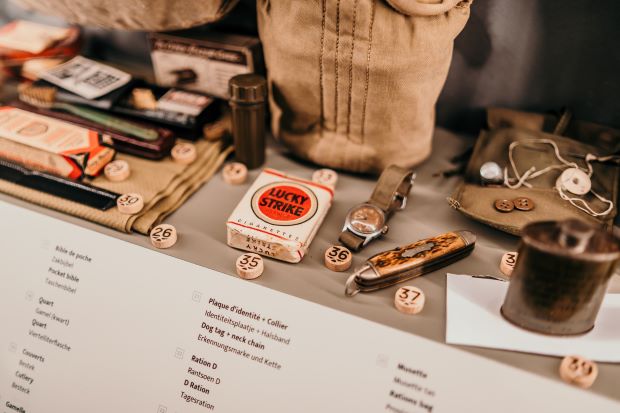
The exhibits include display cabinets filled with period memorabilia, from items of military kit and personal objects to detailed inventories of armaments and uniforms. The importance of communication is underlined with the presentation of an old radio that broadcasts messages to soldiers in the field: they’re fictional scenarios based on real stories.
Two large interactive map tables form the centrepiece of the permanent exhibition, offering a dive into the conflict from an aerial viewpoint, explains Gaeta. The first shows the assault by 30 German divisions as they drove through the densely wooded Ardennes, creating a bulge in the Allied line that would give the battle its name.
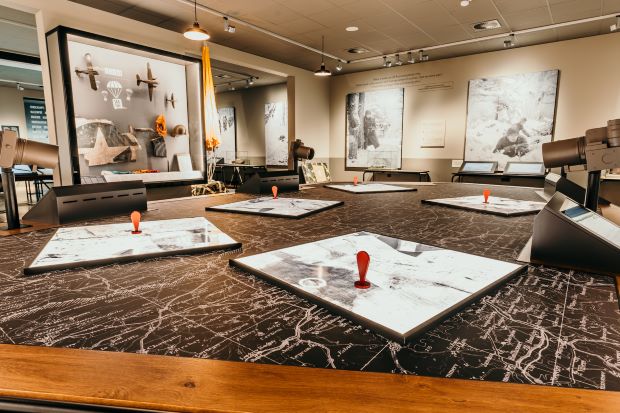
The masterpiece of the second table is original images from a camera recovered by two local boys from the wreckage of a downed US aircraft. These photos expose the full carnage of the war that raged in freezing snow. Interactive elements include close-ups and audio descriptions related via a series of surviving objects.
Visual exhibits detail the paucity of medical kit and uniforms on both sides of the conflict. Soldiers – often engaged in hand-to-hand combat – suffered injuries from the cold, shards of wood from shattered trees, bullets and missile fire.
Aviation played a crucial in the battle’s progression, enabling the Americans to be resupplied, says Gaeta, pointing out how “for the Germans, it was the beginning of the end”.
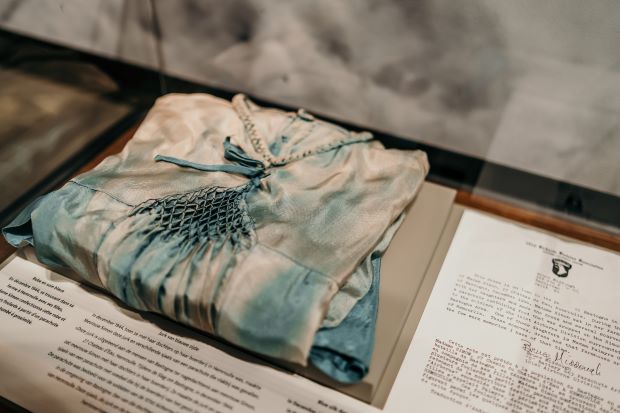
On a lighter note, a delicately smocked faded blue dress contrasts with the tools of war. It was made by a local woman and her daughters from the silk of a parachute and taken back to the US by a GI. He later returned it to the town, one of many enduring tokens of friendship between the people of Bastogne and the US.
The extent of the local population’s suffering is conveyed via a list of all the villages affected by the offensive, along with image projections of the many objects – the detritus of war – that were found in the area. The region was littered with dangerous mines for decades.
Visitors then descend to the cellar complex. These hallowed underground rooms have always retained a symbolic importance, especially for American visitors. That’s one reason it was decided to preserve the site, complete with dusty painted brickwork and musty odour.
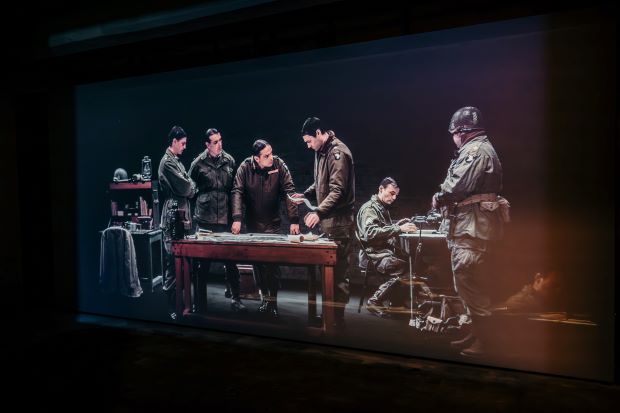
It’s here that the experience becomes fully immersive, as in a succession of four rooms, videos are beamed onto the wall, a reenactment of the scenes around the famous Nuts episode.
Returning to the ground floor, a large photo of McAuliffe and his officers enjoying Christmas dinner is exhibited in the room where this attempt to mark the festivities took place. In the final space, a homage to veterans reinforces the human tragedy of war, followed by an invitation to visitors to write down their impressions of the centre on dog tags that are then hung on a large structure spelling out “Nuts”.
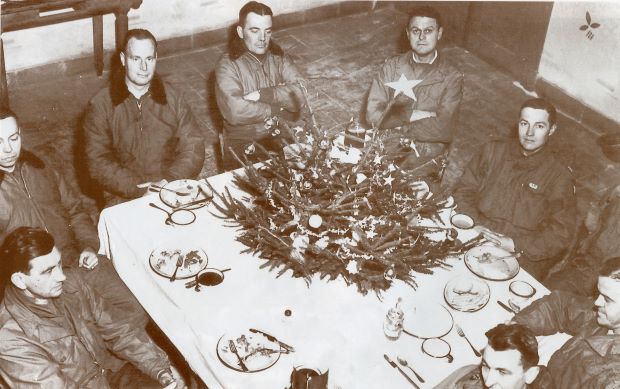
Hitler was rolling the dice one last time when he planned the massive attack on the pivotal town of Bastogne, close to the Luxembourg border. Under pressure from west and east, it was a desperate attempt to split Allied lines, secure the strategic port of Antwerp and force a negotiated peace.
Heavily reliant on the element of surprise, it was carefully timed to take advantage of the bitter cold, freezing rain and deep snow drifts, knowing that the US were ill-prepared for such conditions. He also gambled on the weather preventing Allied aircraft dropping supplies.
The German army was initially successful, outnumbering the Allied forces in the Ardennes, all either new recruits or battle fatigued. After the first assault on 16 December 1944, German forces carried out massacres in the nearby town of Malmedy before surrounding Bastogne. The town was under siege, its citizens taking refuge in any underground space they could find along with some 16,000 soldiers of the 101st Airborne Division.
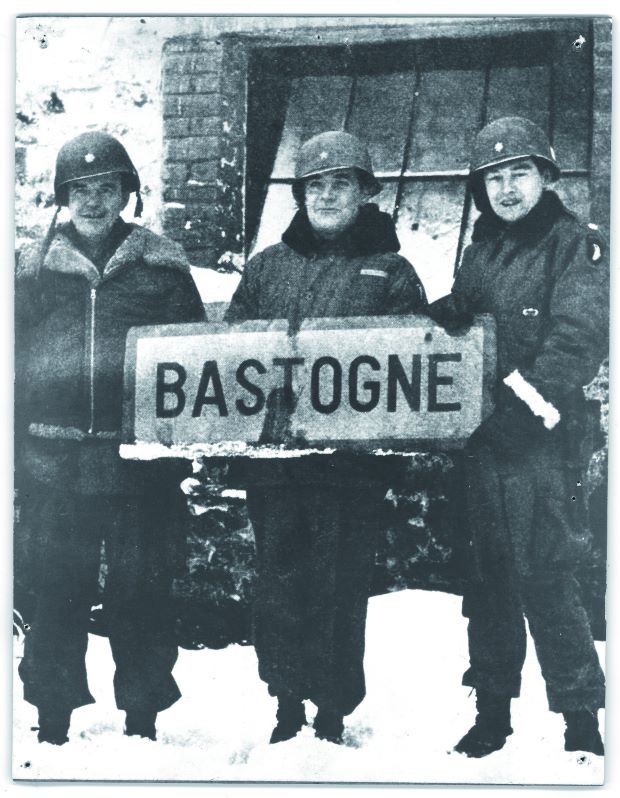
Then St Vith fell, the day before the fateful communication to McAuliffe and his provocative, morale-boosting response. On 23 December, the US began their counterattack, aided by the weather clearing sufficiently for aircraft to deliver provisions via parachute. The arrival of General Patton and his tanks and infantrymen on 26 December succeeded in breaching the German’s stranglehold of Bastogne.
Despite the decisive victory, fighting continued. It wasn’t until 25 January that the Allies finally triumphed and could advance into Germany en route to Berlin. But the bitter six-week battle resulted in heavy losses. The final tally was around 75,000 American, 1,400 British, and around 100,000 German casualties. Some 3,000 local people lost their lives.
For British prime minister Winston Churchill, the Battle of the Bulge was “undoubtedly the greatest American battle of the war”.
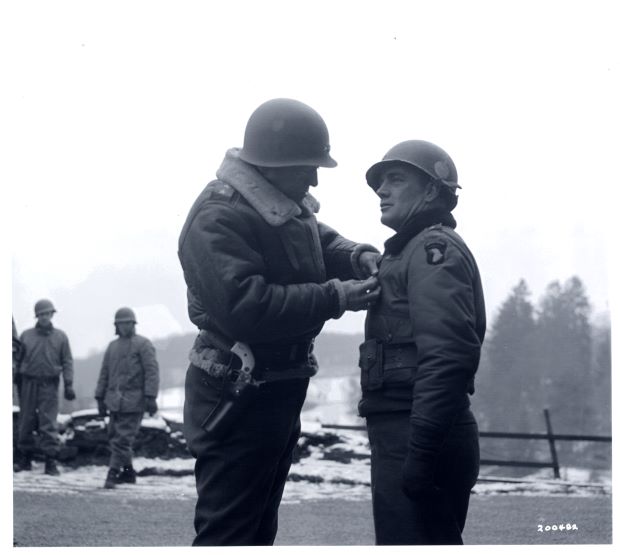
For Bastogne, the investment in a new memorial site confirms its ambition to serve as a commemoration centre for WWII in Belgium. The rural town is synonymous with the Ardennes Offensive, both reliant economically on its tourism benefits and enduringly conscious of the sacrifice it involved.
The war rooms are designed to complement the town’s existing sites: Bastogne War Museum, Bois Jacques and Mardasson Memorial. Three private museums, including the adjacent Bastogne Barracks, complete the total offer for visitors.
For Bastogne mayor Benoît Lutgen, the aim was to further increase overnight stays by visitors and for schoolchildren to make educational trips to the region. Some 60% of visitors are from abroad, he says.
While proud that the town was able to save the emblematic site from demolition, he highlights the contemporary significance of the Nuts message: “It’s more than a symbol, it’s a force of resistance against populism and anti-extremism.”
The project was financed via a €2 million investment by the town, which included profits from the Bastogne War Museum, plus €3 million from the Walloon region.
Bastogne War Rooms
Rue de la Roche 40
Bastogne (Luxembourg province)
Open daily; audio guides available in English, French, Dutch & German
Photos: Nuts ©Bastogne War Rooms ©Tempora; Sign of Bastogne ©US Army Nara; Christmas eve ©US Army Nara; General McAuliffe decorated by General Patton ©US Army Nara









